2024 Porsche Panamera First Drive Review: Refined, Not Rebooted
Porsche's new Panamera doesn't exactly rewrite the formula, but it didn't need to.
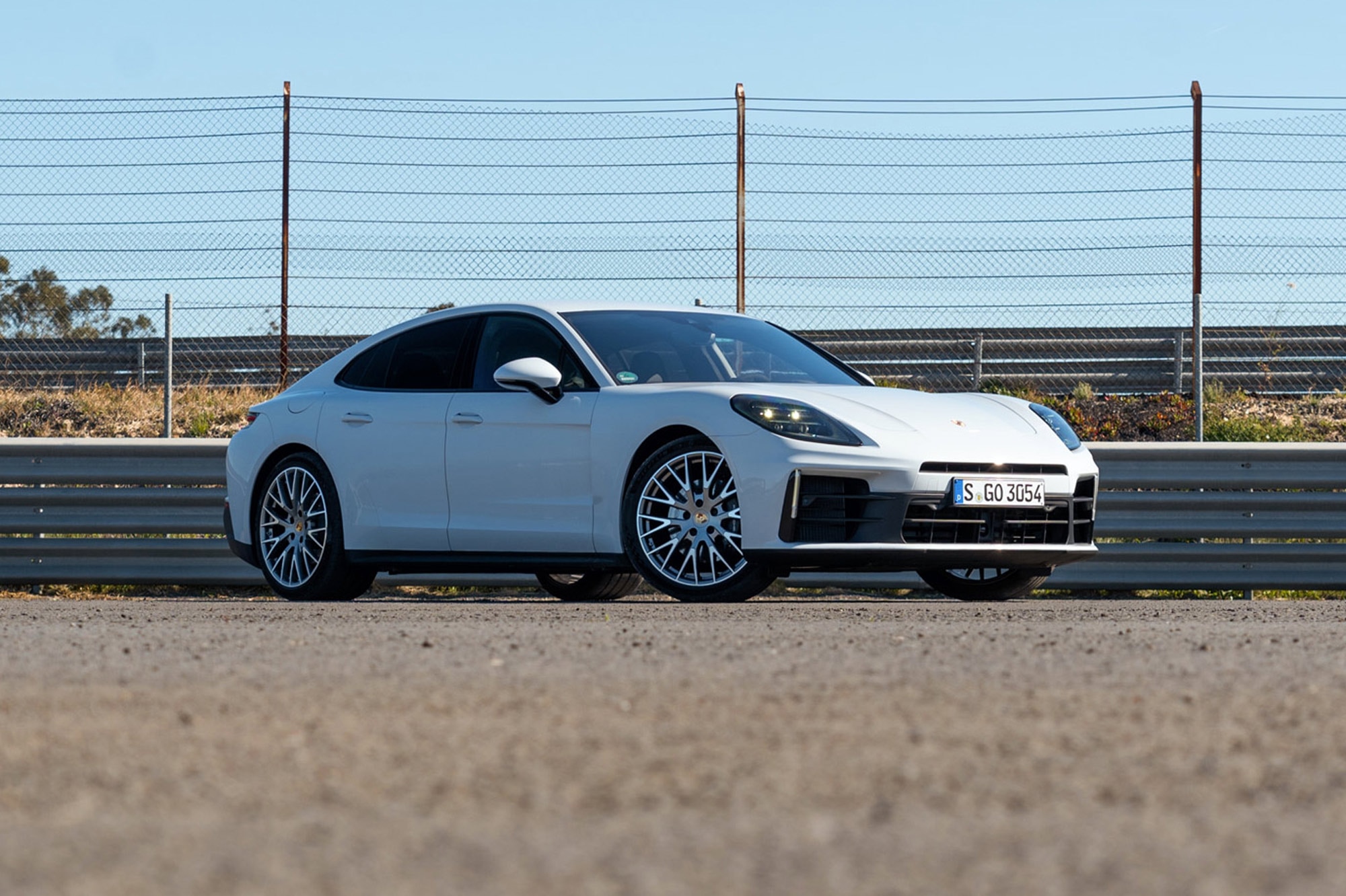 Tim Stevens
Tim Stevens
The Porsche lineup seems endless, as the company slices and dices its core products into a myriad of choices. For example, there are two dozen 911 models, which is a little much. That's why the third-generation 2024 Porsche Panamera grand tourer is a breath of fresh air, launching with just five choices and a base price of just over $100,000.
From that base rear-wheel-drive model, you can step up to the 2024 Panamera 4, Panamera E-Hybrid, and Panamera 4 E-Hybrid, the latter of which has a base price nearing $130,000. Finally, there's the top-shelf Panamera Turbo E-Hybrid, which Porsche still needs to price as of this writing.
Expensive? Yes, but it certainly seems worthwhile, given its substantially improved ride quality, new interior, and significant technology upgrade.
 Tim Stevens
Tim Stevens
A New Suspension and New Interior Highlight This New Panamera
Porsche calls the third-generation 2024 Panamera the G3, though you'll have to look closely to spot the exterior differences, such as the new vent on the front bumper. While the overall shape is the same, the details are more refined, angular, and modern.
Or, you can open one of the doors to determine whether you're looking at a G3. The new 2024 Panamera inherits the interior design themes Porsche previously deployed in the electric Taycan and Cayenne SUV, with more screens, larger displays, and a good injection of technology.
Regarding powertrains, the base Panamera and Panamera 4 use an updated version of the same twin-turbocharged 2.9-liter V6 engine, now delivering 348 horsepower and 368 pound-feet of torque.
Step up to the Panamera Turbo E-Hybrid, and there are more significant changes in store. Thanks to a revised plug-in hybrid system offering an impressive 670 horsepower and 685 lb-ft of torque, the new model has 20 less horsepower than the outgoing Turbo S E-Hybrid but 43 lb-ft more torque. If that's not enough, Porsche estimates it'll now deliver more than 50 miles of electric-only driving on a charge.
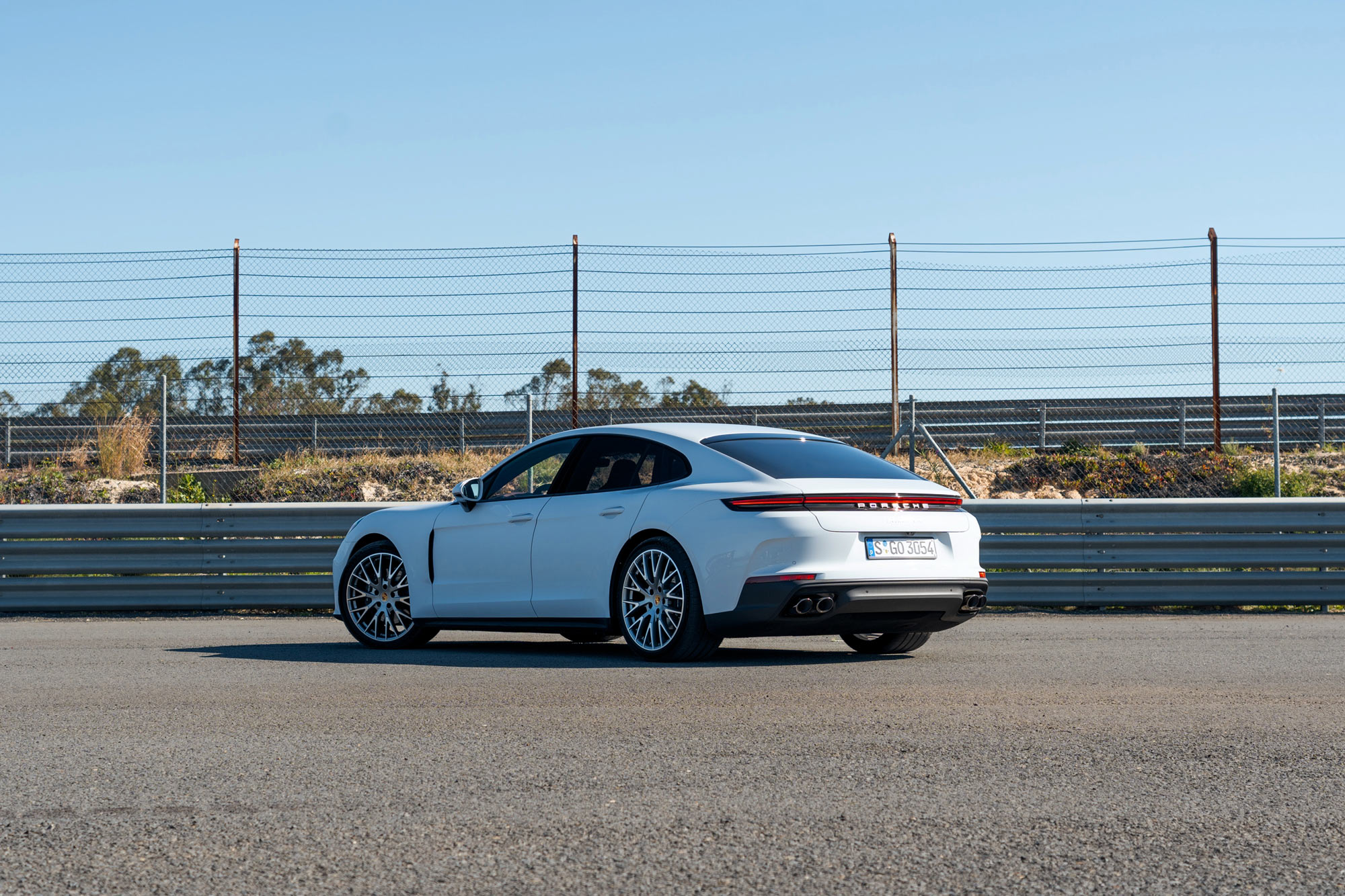 Tim Stevens
Tim Stevens
The New Panamera Is Plush but Punchy
For this first drive review, I drove a 2024 Panamera 4 in Seville, Spain. It was a fully loaded European-spec model configured to closely match what we'll get in the U.S. market.
With $30,050 in options, it wasn't cheap. The highlights included 21-inch wheels, Adaptive Sports Seats Plus with black leather, the assistance package, amongst others. Official pricing for my test car was $138,600, including the $1,650 destination charge to deliver it from the Leipzig, Germany, factory to your local dealership.
The Panamera 4's engine still uses an eight-speed dual-clutch automatic transmission, a Porsche hallmark that improves with each revision. Navigating through the Seville traffic to leave town, the transmission proved smooth and composed, skipping gears for efficiency, seamlessly switching cogs, and disappearing into the background.
Sadly, the surprising amount of road noise from the Michelin Pilot Sport S 5 tires didn't disappear. The ride was smooth, and there was barely a hint of wind noise, but the droning of the tires on the highway was noticeable.
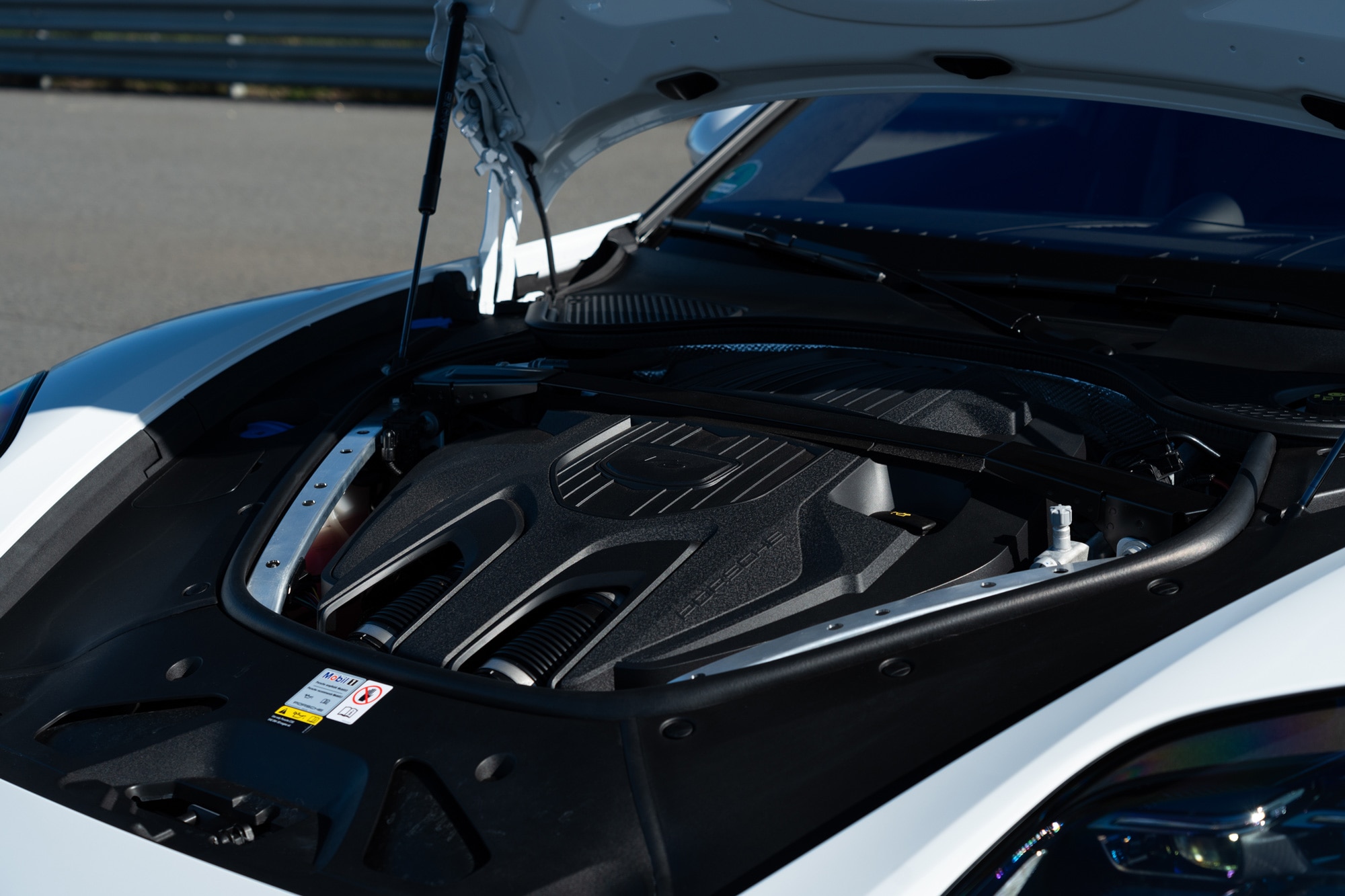 Tim Stevens
Tim Stevens
While the roads in Spain weren't bad, I quickly found enough broken bits of pavement to test the car's new air suspension, and I wasn't disappointed. The adjustments Porsche has made result in a remarkably plush experience of the sort you'd expect from something like a Mercedes-Benz S-Class.
Given how smooth it was when cruising, I was afraid the Panamera might have taken a step too far towards the luxury side of the equation to live up to performance expectations, but a quick twist of the driving-mode knob on the steering wheel changed my mind. The suspension instantly firmed up, giving me a far more responsive car to drive.
So calibrated, the Panamera ducks and dives with far greater enthusiasm than its 16-foot-plus length should manage. Though it has the proportions of a proper luxury sedan, it feels far more svelte when turning.
When it comes to power, the twin-turbocharged V6 engine is strong but a bit relaxed regarding responsiveness, as it takes a moment for the turbochargers to spin up. Hit the Sport Response button to sharpen things up, but those who need a quicker reply to right-foot input will want to step up to the 670-hp Turbo E-Hybrid. That model offers far more shove and far greater throttle response from the integrated electric motor.
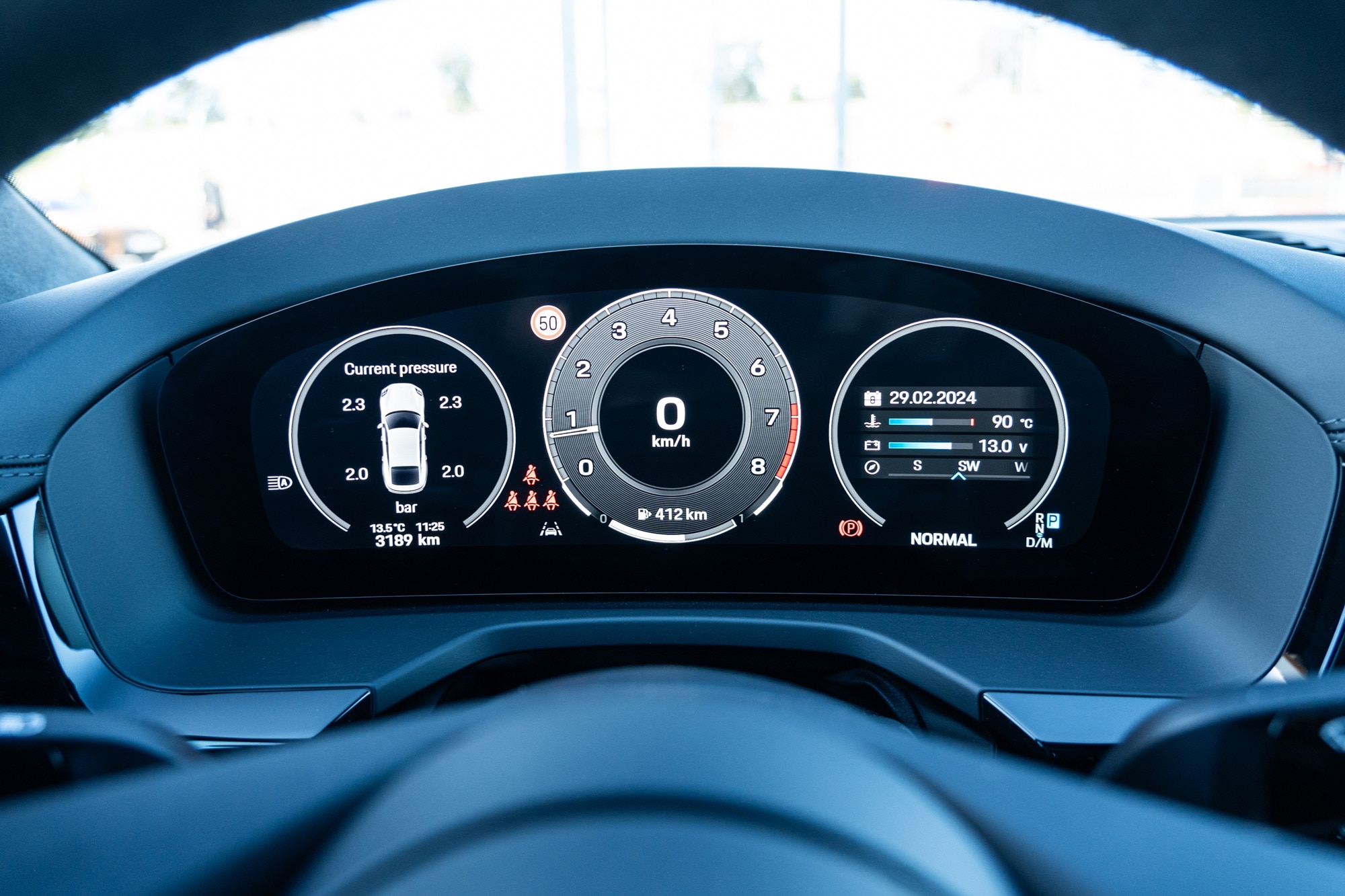 Tim Stevens
Tim Stevens
There's a Touch of Taycan in the New Porsche Panamera
While the new Panamera exterior styling is familiar, the interior is much more of a reboot. The most significant change is the broad, curved, 12.6-inch digital gauge panel behind the steering wheel. The default view is a big, central tachometer in the Porsche tradition. But by cycling through with your right thumb on the steering wheel controls, you can pick anything from a simplified view with little more than speed to a full-screen display of the current navigation map.
The 12.3-inch infotainment touchscreen, running the latest Porsche Communication Management infotainment system, is less flashy but effective. The new Panamera integrates streaming audio services like Spotify and Apple Music, or you can bring your own media via Bluetooth or wireless Android Auto or Apple CarPlay.
You can now option the car with a third display, a 10.9-inch unit situated in the dashboard ahead of the passenger, and even a fourth touchscreen in the back for those hungry for pixels.
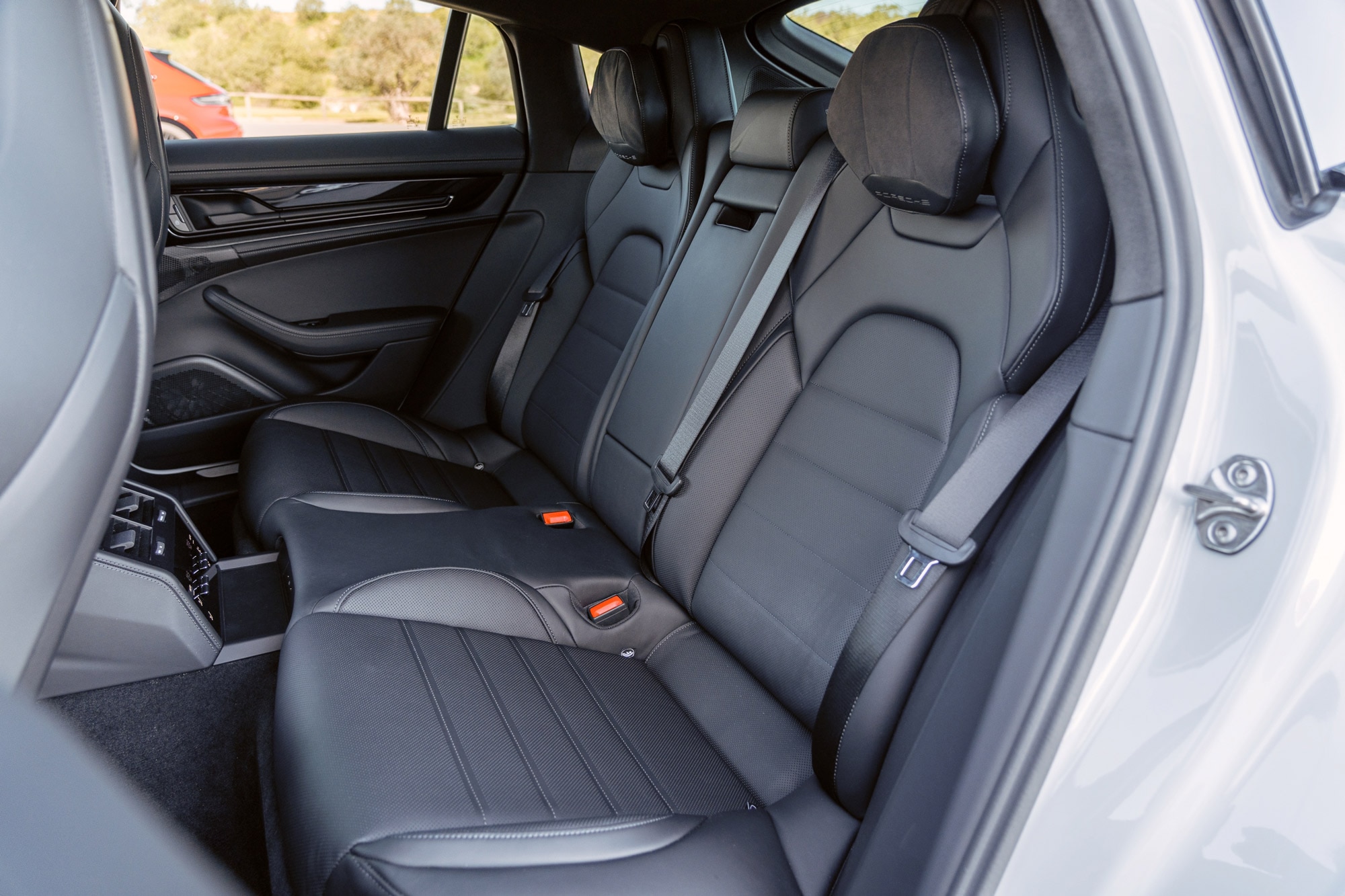 Tim Stevens
Tim Stevens
Regardless of display quantity, the quality of the new Panamera is top notch, with leather or Porsche's Race-Tex simulated suede on most surfaces and high-quality plastics everywhere else. In addition, Porsche has an impressive variety of custom interior colors that allow maximum expression of your personality.
The cargo capacity increases slightly to 17.4 cubic-feet with the seats up or 46.9 cu-ft with them down, and the overall packaging feels better, too. There's plenty of headroom and legroom up front, and I even fit comfortably in the rear seat, especially without the panoramic sunroof.
Regarding active safety features, the new Panamera includes standard adaptive cruise control with full-stop capability, lane-keep assist, and a new speed sign recognition system that automatically adjusts vehicle speed.
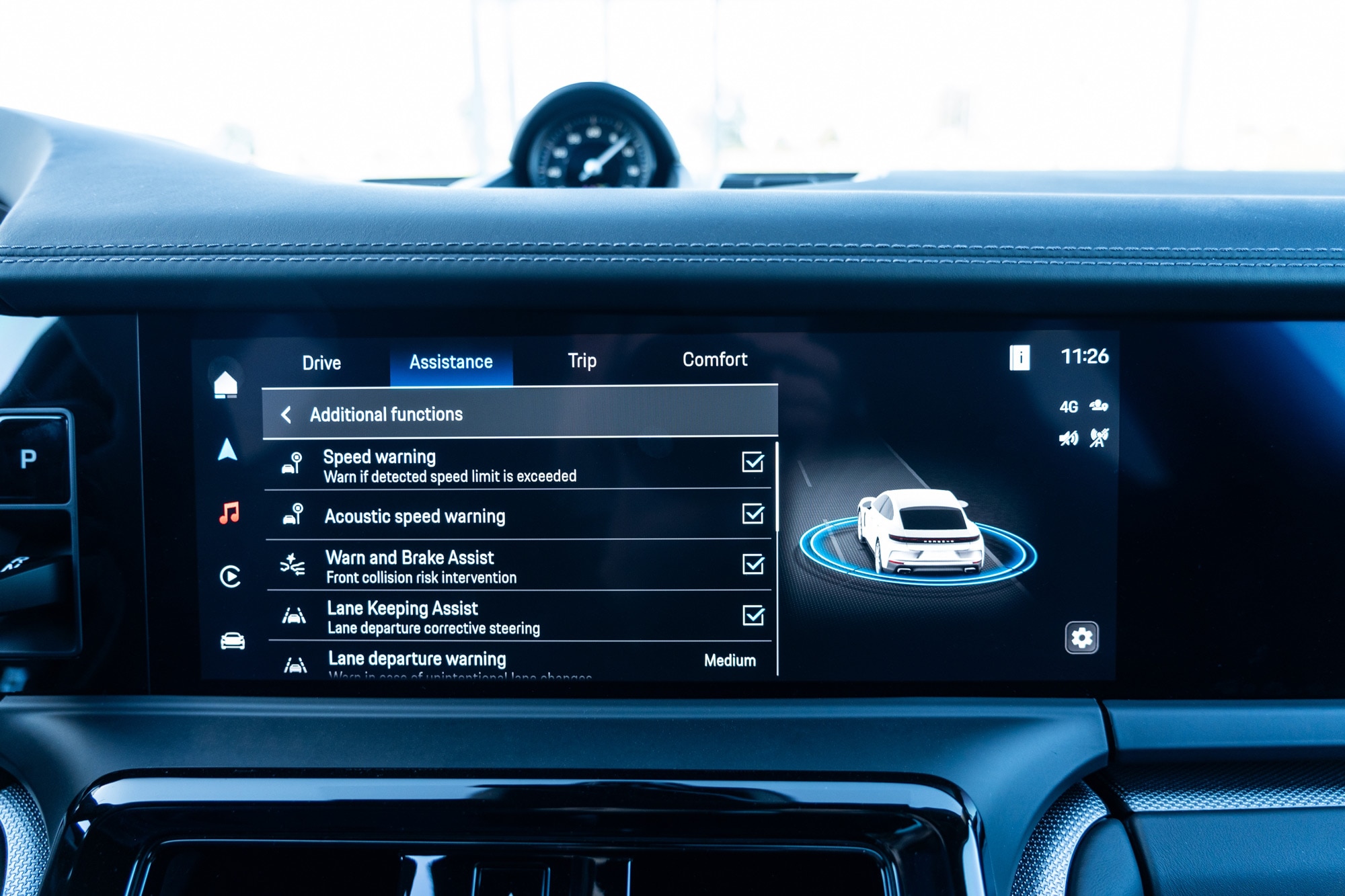 Tim Stevens
Tim Stevens
Add the available InnoDrive package, and things get far more advanced. Features include lane-centering assist, evasive-steering assist, and an upgraded version of the adaptive cruise control with stop-and-go functionality. Porsche also has an optional remote parking assist that works without the driver in the car.
Unfortunately, those safety features were not on the Panameras I tested. Still, the standard adaptive cruise control worked well on the Spanish highways, adjusting speed appropriately and smoothly and bringing the Panamera to a complete stop when needed.
Lane-keep assist was less subtle, waiting until the car was close to the edge of the lane before applying an abrupt adjustment. But during my test drive, it never had a problem spotting the edges of the lane, even in bright sunshine or when the paint was less than pristine.
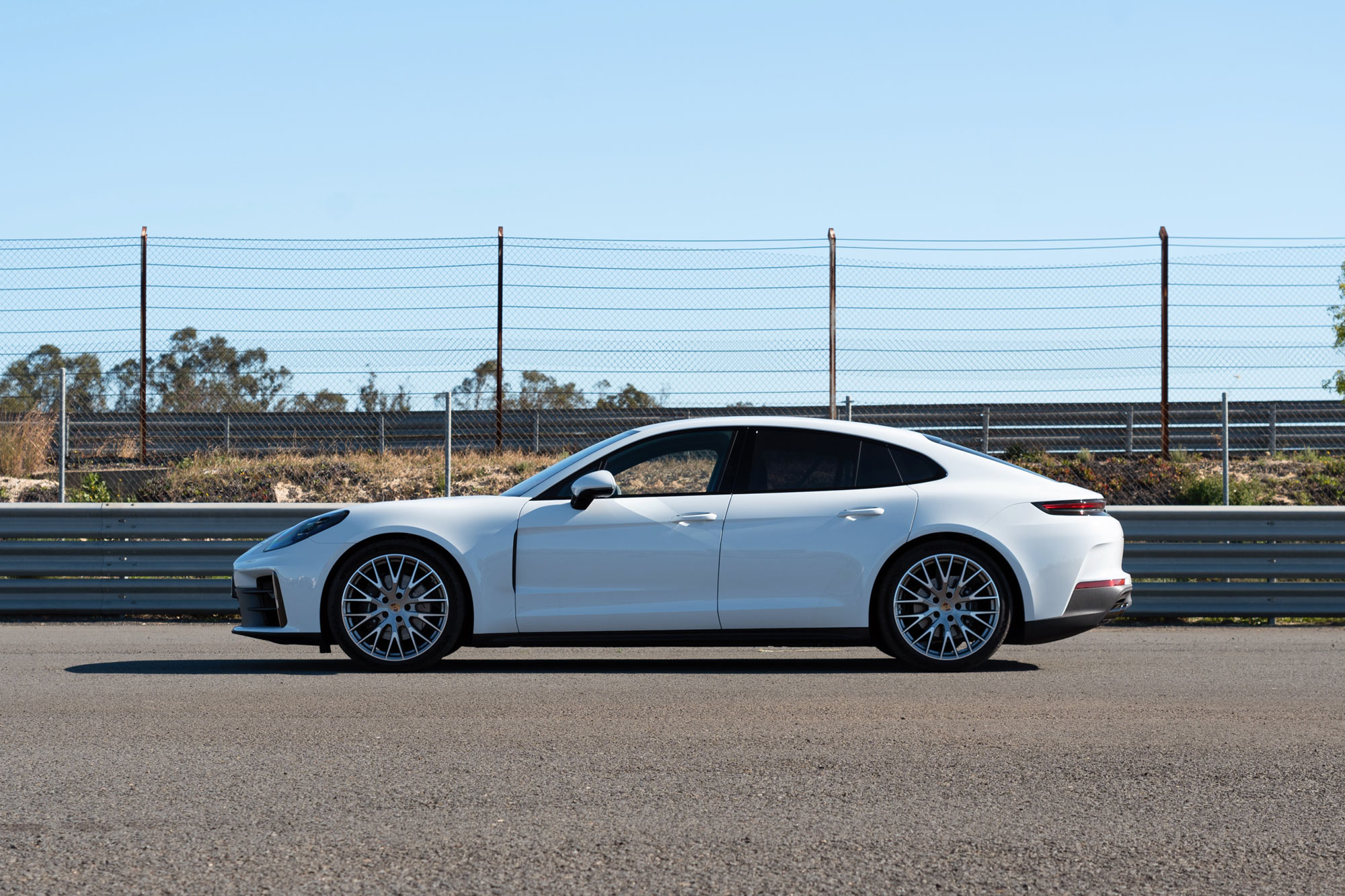 Tim Stevens
Tim Stevens
The New Panamera Is Subtle but Better
The Panamera formula of considerable power, speed, and poise continues unabated. This car has always felt better than it seems like it should, and the new suspension makes it that much better.
The new interior looks fresh and clean, too. Sure, you'll need to look closely to spot the differences on the outside, but we all know that it's what's on the inside counts.
With this year's updates, the 2024 Panamera is perhaps closer to luxury than sport, but its most direct competitor would be the Mercedes-AMG GT 4-door Coupe, which fills much of the same template but doesn't quite offer the same degree of performance. Another alternative would be the BMW 8 Series Gran Coupe, which also merges posh creature comforts and big dimensions with plenty of power and performance.
Porsche provided the vehicle for this 2024 Panamera first drive review and paid for airfare, lodging, and meals during the evaluation period.
Written by humans.
Edited by humans.
 Tim Stevens
Tim StevensTim Stevens is a veteran editor, analyst, and expert in the tech and automotive industries. He helmed a major website's automotive coverage for nine years and acted as its content chief. Prior to that, Tim served as the editorial lead at a tech-oriented site and even led a previous life as an enterprise software architect.
Related articles
View more related articles